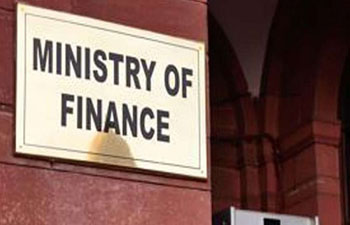INVC,,
Delhi,,
The Fast Breeder Test Reactor at Indira Gandhi Centre for Atomic Research (IGCAR), Kalapakkam, celebrates Silver Jubilee of its successful operation in October 2010. The FBTR went critical on 18th October 1985. The Silver Jubilee Commemorative Function of FBTR and Radio Metallurgy Laboratory (RML) will be held at the Sarabhai Auditorium, Homi Bhabha Building, IGCAR on 10th October 2010. The Hon’ble Minister of State for Science and Technology, Shri Prithviraj Chavan will preside over the function and release two books on the history of FBTR and RML. A special cover to commemorate the Silver Jubilee will be released by Sh. M.R.Ramanujan, Postmaster General, Chennai City Region, Chennai. Dr. S.Banerjee, Chairman Atomic Energy Commission, Dr. M.R. Srinivasan former Chairman, Atomic Energy Commission, Dr. Yuri Sokolov, Deputy Director General, IAEA and Dr. Frank Carre of French Atomic Energy Commission will give felicitation addresses.
FBTR is one of the six fast reactors currently operating in the world. Life extension studies confirm that FBTR can be safely operated for at least ten more Effective Full Power years (EFPY). FBTR was built with French technology, based on the design of the Rapsodie reactor which was in operation in the sixties. With an indigenous component of 80% even in the seventies, FBTR is a standing testimony to the capability of Indian industries to rise to the challenges of any new demanding technology.
FBTR utilizes a novel fuel in the form of carbides of Plutonium and Uranium. The Pu content of the fuel is high (70%) which makes it unique in the world. The fuel was developed by joint research by BARC & IGCAR and manufactured to exacting standards. Its performance has been excellent in terms of the energy that can be extracted out of every gram (which is technically called by the term ‘burn-up’). The carbide fuel has reached a burn-up of 165kWd/g without any breach of its outer clad. This means that from every gram of the fuel, heat equivalent of 165 electrical heaters of one kilowatt capacity working for 24 hours has been extracted. What is interesting is that about 80% of the fuel is still unburnt. The recovery of the unspent fuel (which is called ‘reprocessing’) has been successfully demonstrated by IGCAR. Plutonium recovered from the spent fuel from FBTR has been fabricated into fresh fuel pins and loaded back into the FBTR thus closing the fuel cycle.
The operation of FBTR for the past 25 years has by and large been smooth and successful. The four sodium pumps have been in trouble-free continuous cumulative service for nearly 6,75000 hours. The sensitive leak detection systems of the steam generators which can detect nanogram levels of hydrogen in sodium have been in flawless, continuous operation for nearly 18 years. The unique small capacity turbine using such steam has been operating smoothly.
FBTR completed a major milestone in June 2010 when the mixed oxide fuel used in Prototype Fast Breeder Reactor (PFBR), 500 MWe reached its intended burn-up of 100 kWd/g. The successful attainment of the target burn-up augurs well for the performance of the fuel in PFBR, 500 MWe.
In the coming years, FBTR will continue to be the work-horse for the testing of metallic fuels and advanced structural materials being developed at IGCAR for the next generation of fast reactors with higher breeding ratios. FBTR would continue to generate science based technologies for sodium cooled fast reactors and be a credible cradle for human resources development in this vital technology.
Materials irradiation programme involving nuclear reactors necessarily have to be supported by a Post Irradiation Examination programme to gain maximum insight on the behavior of materials in Nuclear Reactors. The Radio Metallurgy Laboratory (RML) with a hot cell facility adjoining the Feast Breeder Test Reactor was meant to cater to these needs. The concept and design of such a facility was unique as it was a first of its kind alpha-beta-gamma facility in the country capable of handling high plutonium content fuels. RML has played a pivotal role in the progressive enhancement of the unique high plutonium carbide fuel from a target burn-up of 25 GWd/t to 165 GWd/t.














Hi, this is a very interesting blog page and ive enjoyed reading many of the articles and posts contained on the website, keep up the good work and hope to read some more interesting content in the future.